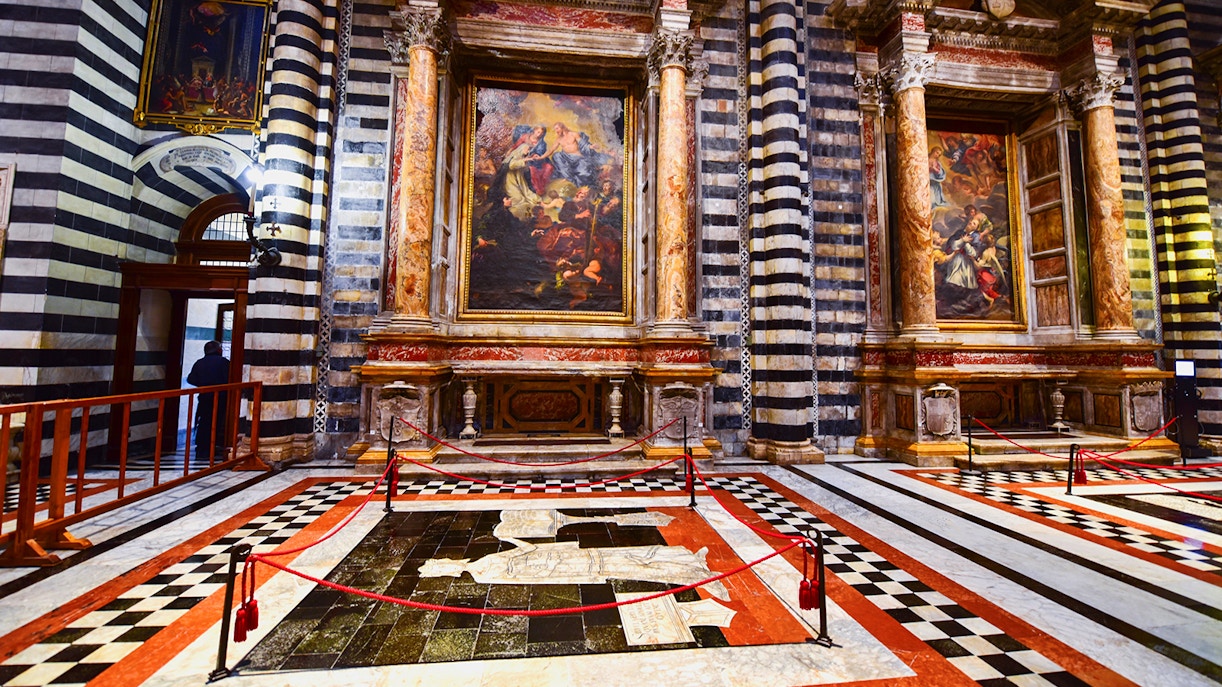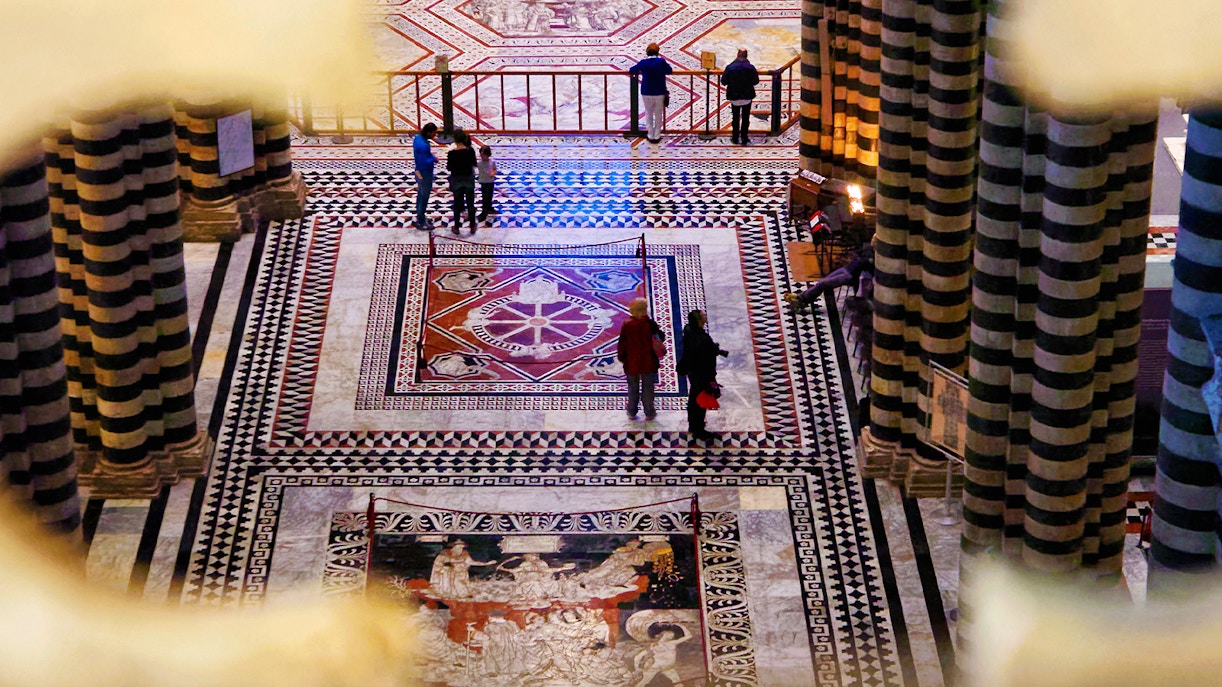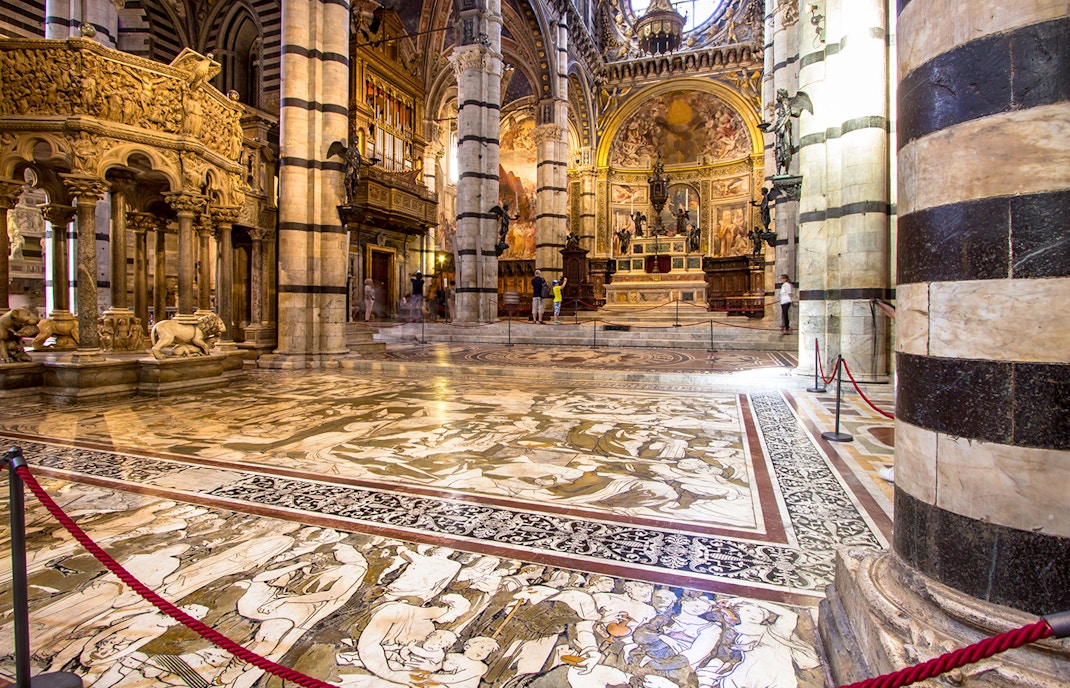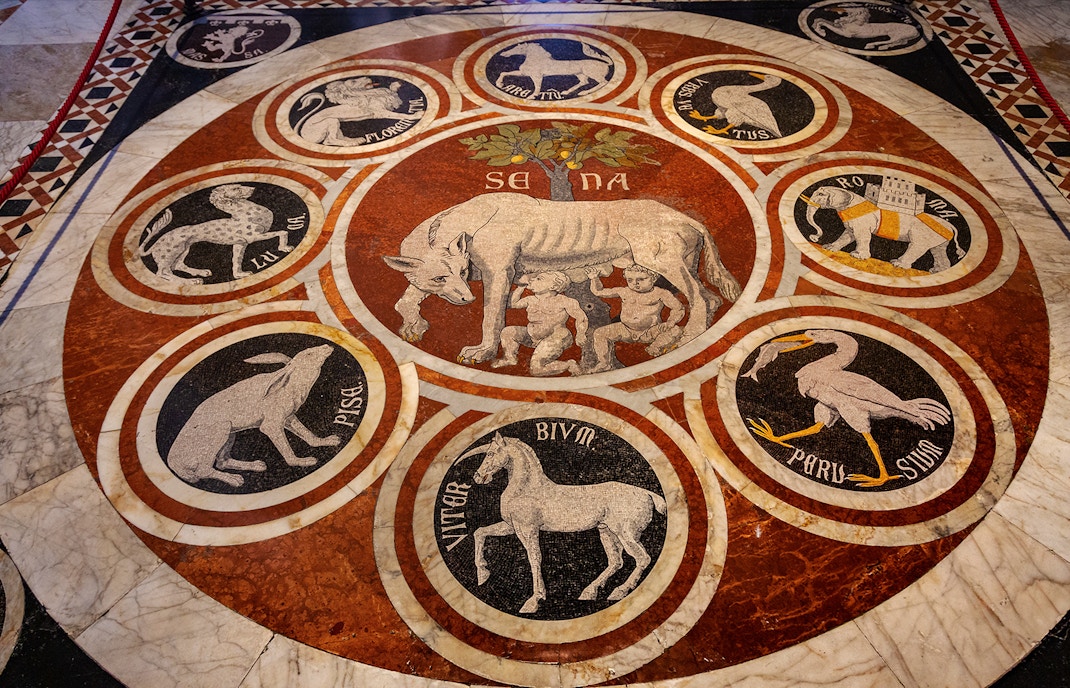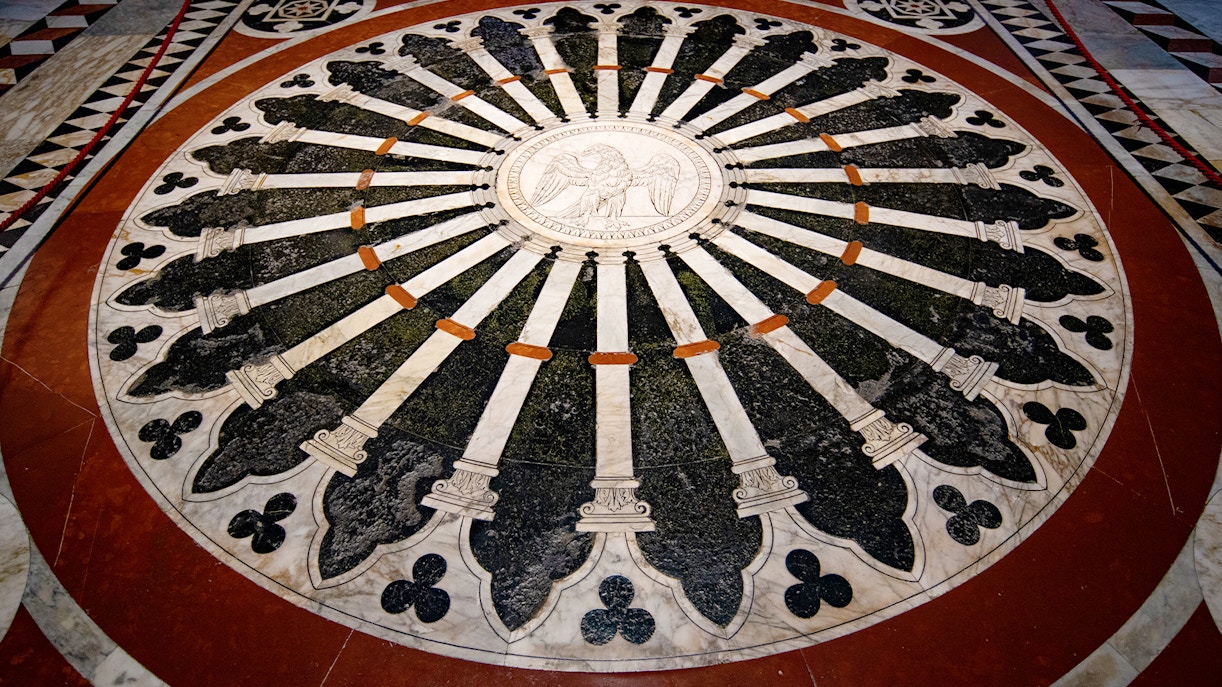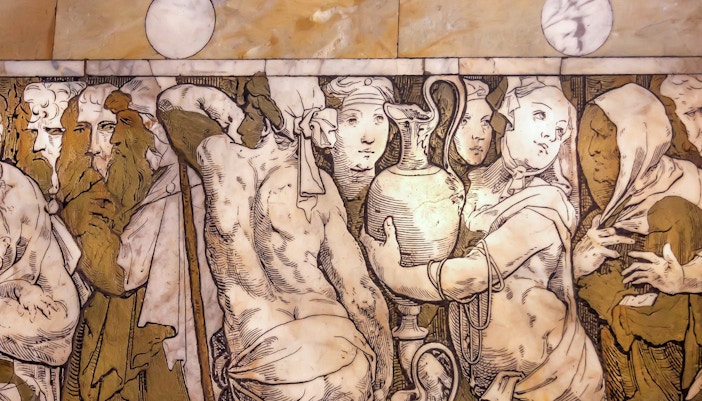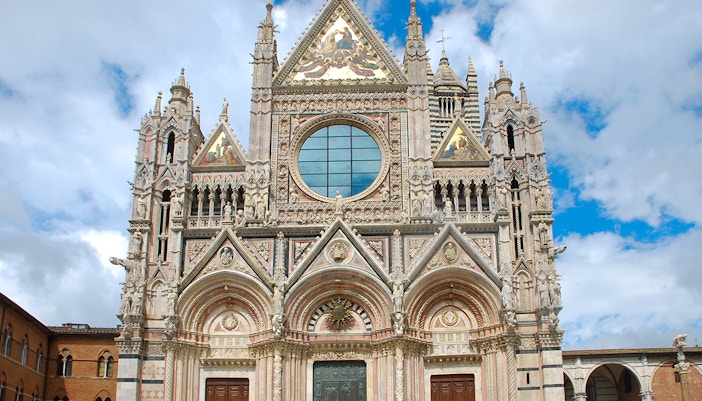Constructed during: 14th Century - 19th Century
Materials used: Marble and stone
Floor area: 14,000 square feet
Notable features: 56 panels of marble inlays
Access: You can see the uncovered floor with your Siena Cathedral tickets. Expect higher prices during the unveiling period.
Siena Cathedral Floor | Quick facts

